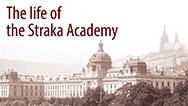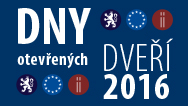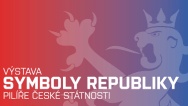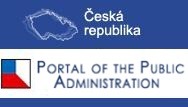Exhibitions
27. 11. 2009
Advent in the Lichtenstein Palace
The competition for the most beautiful advent garland, was announced this year in which 51 children's homes from the Czech Republic would participate.
Original children's works will be displayed in the garden of the Lichtenstein Palace. There the Prime Minister Jan Fischer together with his wife will meet children and light the first advent candle.
The exhibition is open to the public
When: From 30 November to 23 December
Monday - Friday, 10:00 a.m. - 16:00 p.m.
Where:Lichtenstein Palace, U Sovových mlýnů 4, Prague 1 - Kampa
Internet voting: Photographs of advent garlands are published at our websites where the electronic voting is in progress as well. Results of the competition and awarding of winners will be announced in the course of January 2010.
Christmas of the German minority - a history of the advent garlands
German speaking inhabitants formed the largest minority in the Bohemian Lands. Czech s and Germans, as well as their customs throughout the year and especially during one of the most important holidays – Christmas, had been strongly interconnected until the World War two.
It is the Baby Jesus who descends from heaven and accompanied with angels, brings Czechs together with Austrians and Germans, presents on the Christmas Eve. Germans living in Sudetenland called this baby Kristkind.
Arrival of the Baby Christ was announced several days beforehand; parents threw apples and nuts in rooms where children were playing and announced: "the baby Christ will come". Before the custom of decorating a Christmas tree was taken hold, children had been given presents on the Christmas Day under the nativity scene. Nativity scenes were usually carved of wood and many of them were several metres wide and they were often mechanical. The nativity scene pieces were driven by clockworks. Also Christmas wooden pyramids decked on the individual floors with candles and hot-air rotating figures were very common.
As early as on the first day, on the fourth Sunday before the Christmas Eve, the garlands appeared in German households. This custom was, together with the calendar, adopted by Czech families. The first mention on the garlands dates back to 1850 when an Evangelist pastor established so-called Rauhe Haus – an institution for unprivileged children. In 1860 he passed this custom to Berlin where he headed an orphanage. The garland was carved of wood in the form of a chandelier with 24 candles. The first candle was lit on the first Advent day and on the following days other candles were lit. The garland was hanged above the door of the orphanage and under it an alms bow was placed. The Advent garland in the form of branchlets with four candles symbolizing new life appeared round 1900 and it spread into the citizen's class after the World Was One. Advents calendars appeared for the first time in Germany in 1908. It was a cut-out calendar with short poems and Christmas pictures and motives.
The Christmas Eve was really very lavish even in poor families: housewives were baking Christmas cakes, strudels, cakes and other pastries. Apples and nuts were placed on tables. Families shared all these food with servants and carollers.
There were certain meals which belonged to the Christmas Eve; these meals were to ensure abundance in the following year and protection of the family and the farm against evil forces; they were for example buckwheat mush, milk soup with poppy seed, mushroom and plum soups.
In the Liberec region, for example, after a strict fasting, dinner was served between 5 and 6 o'clock in the afternoon. Fish soup, fish so-called swarzfisch with cabbage and dumplings, roasted fish with stewed fruit and milk soup with puppy seed and puppy seed milk were indispensable. In richer families pigs were slaughtered and poorer relatives were given gifts. White sausages were very popular Christmas meal together with potato salad, roasted goose or duck.
As to the pastry, the most popular were gingerbreads and cookies made of nuts and candied fruit covered with chocolate.




